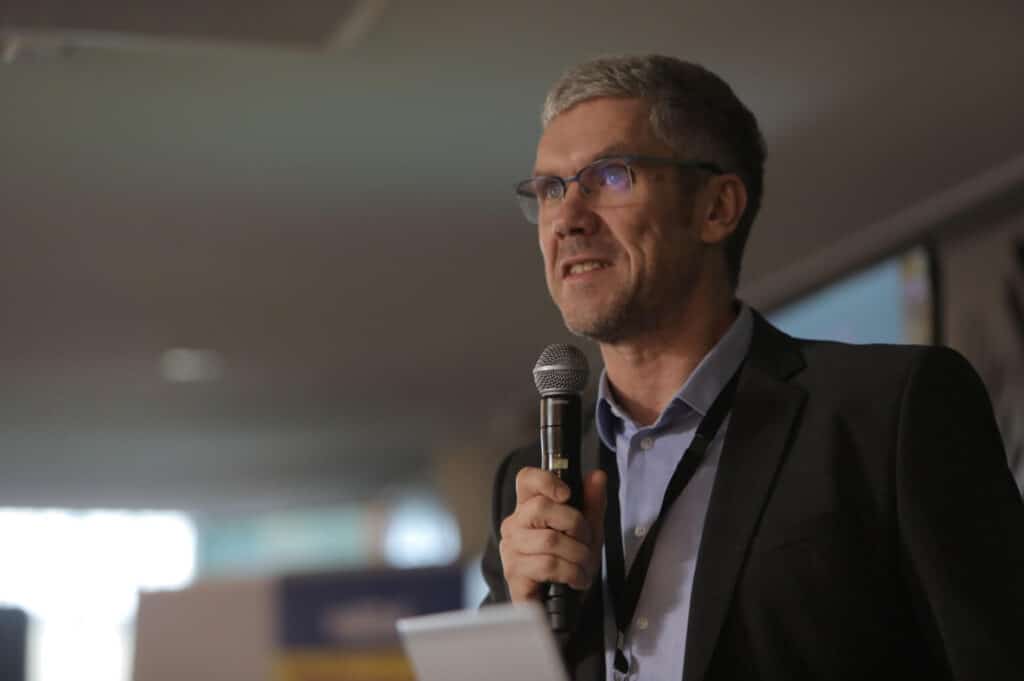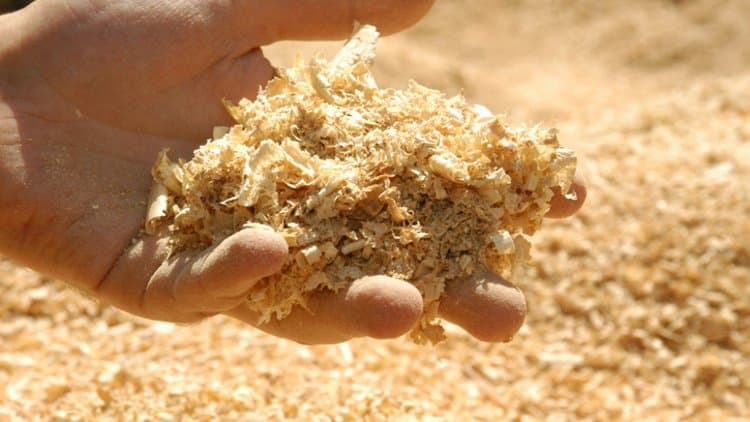That was the main takeaway from Dr Michael Berger’s address to an Australian conference last week.
As CEO of PEFC International, the world’s largest forest certification scheme, Dr Berger is across the challenges of resource availability – his concerns substantiated by recent reports published by the World Bank and FAO.

Driven by urbanisation, decarbonisation and housing demand, specifically in the developing world, timber is increasingly replacing steel, aluminium and concrete according to a recent report by Investment Monitor.
PEFC (9%) and FSC (4%) collectively account for around 13% of the world’s total forest area – and for more than 20 years forest certification has provided a ‘green pathway’ for timber products to demonstrate sustainable credentials.
With the suspension of Russia and Belarus from both certification schemes, and with a number of countries including the United Kingdom and European Union banning the outright import of all timber from both countries, the Ukraine invasion has exacerbated the challenge.
If we take FSC for example, the decision to suspend Russia and Belarus resulted in the total supply of FSC certified forests contracting by almost 35% since March 2022.
For PEFC the number was around 15%.
Russia is the world’s largest softwood export market, at the time of the Ukraine invasion more than 20m hectares of Russia forest area was dual-certified by FSC and PEFC.
In total this represented almost 25% of the world’s dual certified forest area.
And that only considers area that has been taken out of the global markets for certified forest products, not the long-term degradation of forests caused by the conflict or record shipments of Russian timber using third parties to contravene trade bans.
So where will the long-term supply come from?
Expansion of commercial forest production in new markets
The first option is the expansion of commercial forest production into emerging markets – specifically Africa, the Middle East, and the Oceanic regions.
According to Investment Monitor, the majority of timber supply are ‘softwoods’ from temperate forests in the northern hemisphere (specifically Canada, the USA, northern Europe and Russia) and plantations in Oceania (Australia and New Zealand).
Whether emerging markets have the infrastructure to establish effective plantations – let alone certified forests – is a challenge.
A quick scan of the FSC and PEFC-certified maps identifies where the challenges lie.
The vast majority of growth in certification over the past 10-to-15 years has been in ‘dual certification’ where an FSC-certification scheme has been established in a PEFC country and vice versa.
According to a well-placed source:
“FSC and PEFC have set up schemes in all the countries that have the infrastructure, the challenge is to now invest in the regions that do not have sufficient infrastructure to support certification.”
Ultimately forest certification can be expensive business – local offices need to be established, accreditation and certification bodies need to be recognised and that’s before a licensed auditor assesses the sustainable practices in the forest.
Even still, it’s unlikely that an increase in global forests certified will meet the escalating demand for timber.
What about bamboo and other grass-related products?
Increasingly bamboo and other grass-related forest products (including hemp) have been identified as viable alternatives to timber.
Last week, Michael Green in the keynote address at the International Mass Timber Conference in Portland discussed the value of bamboo in meeting demand for timber in countries that either lack forest or have severely threatened forest.
“Huge parts of the world either don’t have forests or have super-threatened forests and wooden buildings are not a good solution to the stock from sustainable forestry,” Mr Green told Dezeen last month.
“So, the work we’re doing now is focused on grasses, bamboo, and other plants, as well as trees.”
Bamboo can replenish itself much faster than timber, does not need pesticides, can be farmed on existing farmland, and can be used for food as well as building products.
In fact, more than 80% of the world’s bamboo species are found in Asia – in regions which are not conducive to softwood plantations – the main driver of the surge in demand for timber.
It can now be certified under FSC and / or PEFC and was recently showcased as part of Wood Central’s “Panama Treetops: Bamboo & Recovered Hardwoods for Unforgettable Stay” case study.
Whilst bamboo is part of the solution it is not the solution.
Bamboo is heavily reliant on water – and whilst it is highly effective as an agricultural crop in areas of natural high waterfall, farming bamboo in areas heavily reliant on irrigation can be harmful to the environment.
Can we convert fibre from pulp for paper to value-added mass timber products?
Another option is to convert pulp intended to be used in paper production to mass timber products.

In Australia, it’s estimated that a 5-10% conversion of fibre intended for pulp for woodchip could address the country’s deficit in timber products.
And the technology has been around for decades.
During the mid-1980’s, the CSIRO Division of Chemical and Wood Technology developed a pilot-scale plant producing ‘Scrimber’ – a reconstituted timber product, for structural use.
The technology took low-value radiata pine and produced higher-value laminated-veneer-lumber for engineered beams.
Ultimately the worse the fibre, the better you can reconstitute it and create a higher valued product.
40 years later, the technology is being embraced by companies across the world looking to upcycle inexpensive timber products.
Whilst the technology has massive potential, global the demand for paper-based packaging is expected is explode over the next 30 years.

Substituting pulp for chip to meet the demand for timber, by itself, is not a feasible global solution.
What about waste and landfill?
According to another well-placed source, up to 2m cubic metres of wood-based material ends up in Australian landfill.
“We need to find a way divert wood-based materials from landfill.”
“Certain waste-based products could be reused for particle board and could be converted into high-value structural products,” the source told Wood Central.
Timber that cannot be recycled, often ends up in biomass – an energy source that emits 50 times less emissions than black coal combustion and 30 times less emissions than natural gas.
But could more timber be salvaged and reused?
“Absolutely, but it would require a major transformation in technology” the source said.
Ultimately this is the circular economy in action.
The circular economy is a model of production and consumption, which involves amongst other things, sharing, reusing, repairing, refurbishing, and recycling existing materials and products to extend its lifecycle as long as possible.
In practice, it implies reducing waste to a minimum.
In November 2022, the Australian Government committed to a fully circular economy by 2030 and last week, the Australian Government passed its Natural Reconstruction Fund which allocated up to $500m to forestry and fibre businesses committed to transition to renewables and embrace the circular economy.
“This is an important part of the mix, but it’s not the solution either,” the source said.
Keep working forests working…
During the recent International Day of Forests, the FAO acknowledged the importance of forests for health.
Late last year, the FAO identified working forests as the natural solution to fight climate change – with low embodied timber driving the surge in demand for timber.
“Ultimately we need to plant more trees, keep sustainable forests working and stop converting forests to agricultural lands,” a source told Wood Central.
Supporting this, Boston Consulting Group (BCG) has identified a number of threats to forests – land-use changes, specifically conversion of working forests; rising global temperatures; unsustainable logging; abiotic disturbances such as wildfires; and biotic disturbances such as the spread of pests and disease all feature prominently.
According to Investment Monitor, plantations make up around 3% of the global forested area – and has jumped by more than 40% over the past two decades.

Planting more trees is crucial, in a recent article for Wood Central, Southeast Asia Reporter Ken Hickson spoke of the sustainably managed forests, certified to PEFC and FSC certification, in reducing our reliance on fossil fuels.
Ultimately there is no single solution to meet the future demand for timber, however, in combination, supply of timber or forest-based alternatives can be strengthened to meet demand.






